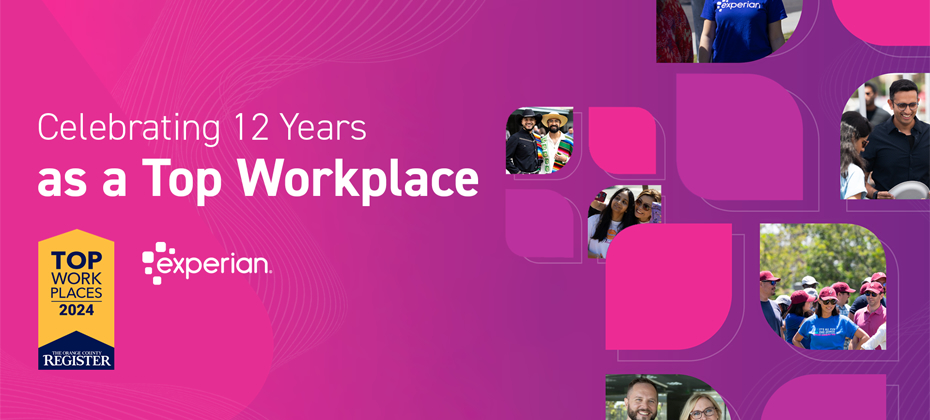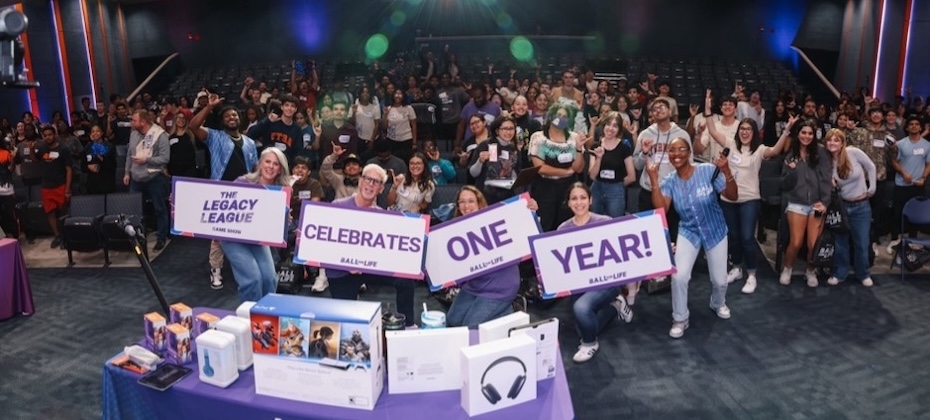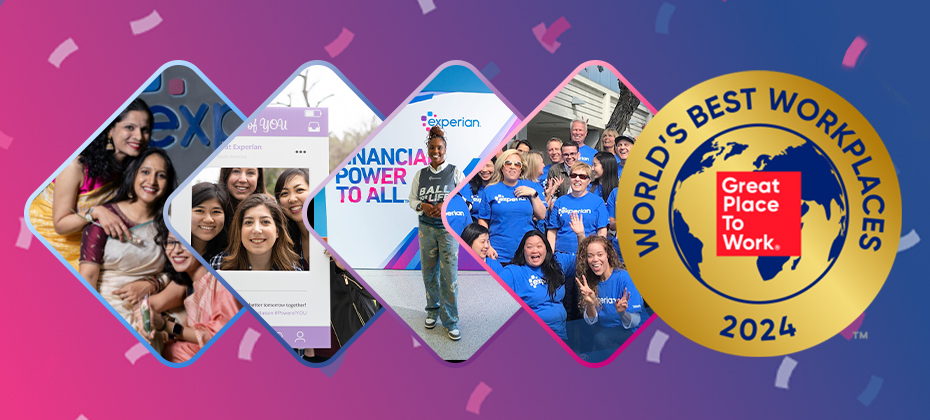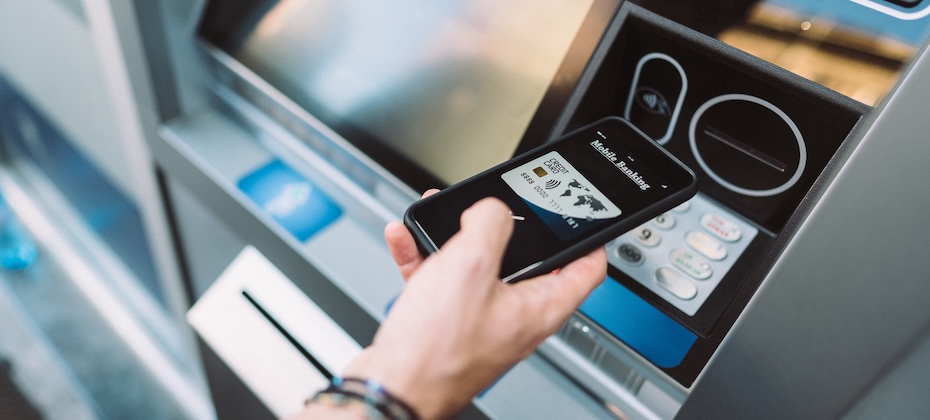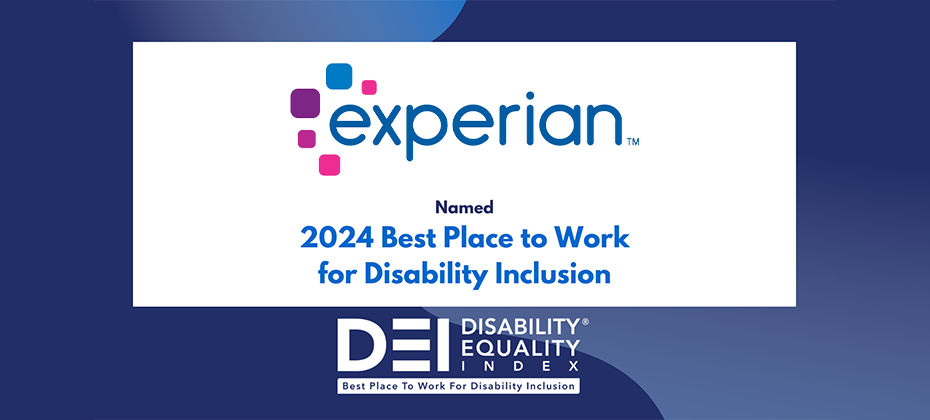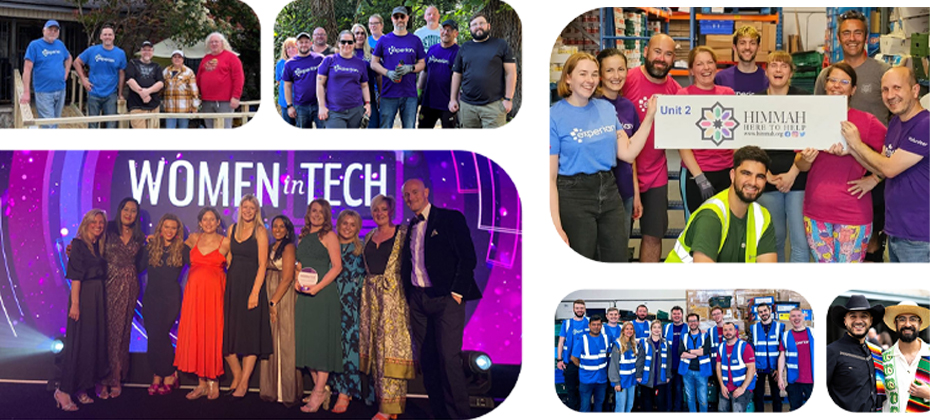At A Glance
At a Glance When an unknown printer took a galley of type and scrambled it to make a type 2ince the 1500s, when an unknown printer took a galley of type and scrambled it to make a type specimen book. It has survived not only five centuries, but also the leap into electronic typesetting, remaining essentially unchanged. It was popularised in the 1960s with the release ince the 1500s, when an unknown printer took a galley of type and scrambled it to make a type specimen book. It has survived not only five centuries, but also the leap into electronic typesetting, remaining essentially unchanged. It was popularised in the 1960s with the releaseince the 1500s, when an unknown printer took a galley of type and scrambled it to make a type specimen book. It has survived not only five centuries, but also the leap into electronic typesetting, remaining essentially unchanged. It was popularised in the 1960s with the releaseince the 1500s, when an unknown printer took a galley of type and scrambled it to make a type specimen book. It has survived not only five centuries, but also the leap into electronic typesetting, remaining essentially unchanged. It was popularised in the 1960s with the releaseince the 1500s, when an unknown printer took a galley of type and scrambled it to make a type specimen book. It has survived not only five centuries, but also the leap into electronic typesetting, remaining essentially unchanged. It was popularised in the 1960s with the release

Experian Marketing Services announced the appointment of industry leader Peter DeNunzio as general manager for Experian CheetahMail. DeNunzio assumes responsibility across all CheetahMail offices in the United States and reports to Matt Seeley, president of Experian Marketing Services. With more than 25 years of experience in marketing, branding and direct-to-consumer programs, DeNunzio has a proven track record of anticipating opportunity and delivering results in every organization he has led. “Peter is a recognized leader in our industry, and joins us with an exceptional background in interactive marketing, data and agency services,” said Matt Seeley, president of Experian Marketing Services. “Through his leadership and breadth of experience, Peter brings a strategic vision that is essential as we continue to invest in technology and innovative solutions that help our marquee clients deliver truly coordinated, relevant and response driven marketing programs.” DeNunzio joins CheetahMail from Aimia (formerly Carlson Marketing), where he was most recently the president of the U.S. Customer Loyalty business. At Aimia, DeNunzio was charged with leading the design and delivery of all U.S. loyalty programs directed toward consumer audiences. Prior to Aimia, DeNunzio was president of Draftfcb New York Earlier in his career, he spent more than 14 years with Ogilvy & Mather, including the global position of managing director EMEA for client IBM, during a period of significant growth in digital and database marketing for the brand. He was also the general manager for OgilvyOne New York and general manager, Global Clients. Commenting on his new role, DeNunzio said, “As the industry’s largest integrated email service provider, with a client base representing the world’s most recognized brands, CheetahMail has built a reputation for exceptional service and innovation. I’m thrilled to lead this team of talented marketers, and I’m especially excited about the future as CheetahMail accelerates its commitment to providing a fully integrated, interactive marketing platform that helps brands connect with customers in a true multi-channel environment. “ DeNunzio lives in Manhattan and serves on the board of the Columbia Business School Center for Global Brand Leadership and on the board of the Advertising Education Foundation.

The auto finance market is always a hot topic for discussion. After all, a vehicle loan is the second largest purchase that most consumers will ever make (the first being a home). Following the credit crunch, analysts and consumers alike watched the auto finance market with great interest to see how auto lending would be affected. The answer? Well, according to Experian Automotive’s Q3 State of the Automotive Finance Market analysis, subprime financing and leasing are continuing to make a strong comeback, which is good news for everyone. According to Melinda Zabritski, Experian Automotive’s director of credit, “Expanding loans to lower-risk tiers opens the market for more car shoppers, while an increase in leasing means it is easier for consumers to get more vehicle for a lower monthly payment. Both of these trends are positive signs of a strong and recovering auto finance market, which ultimately benefits the consumer and the entire auto industry.” Experian Automotive’s quarterly report looks at several areas of the automotive finance market to show how things have changed on a year-to-year basis. In Q3, market share for nonprime, subprime and deep-subprime automotive loans for new vehicles grew by 13.6 percent and new vehicle leasing grew by 7.53 percent year over year. The analysis also looked at the top makes that consumers financed. In Q3, Toyota grabbed top honors, claiming 14.09 percent of all new vehicles financed. Ford was second with 13.16 percent, and Chevrolet was third with 11.10 percent. Other areas covered in this quarter’s analysis include average consumer credit scores for new and used vehicle loans, average dollar amounts financed, 30- and 60-day delinquencies, repossessions, as well as which new vehicles had auto loans with the highest average consumer credit scores. For more information on this report and other automotive-related insights, please visit ExperianAutomotive.com or check out our press release.

There are two sides to every story. It’s one of those old clichés you hear time and time again. When I think about the collections process, this is the first thing that comes to mind. You have the consumer or debtor who enters into an agreement to pay for something and at some point, makes the decision not to pay. It could be a credit card bill or a car payment –or maybe they even forget to pay a library book fine (this actually happened to someone I know!). On the other side, you have the debt collector, who has the task day in and day out, of collecting on the debt the debtor has agreed to pay. This can be stressful, daunting and even unpleasant for both parties. The debt collector is concerned with finding the right party and working out a way to get the debt paid and they use a number of tools to help them do this, including skip tracing products. They definitely don’t want to spend time going down the wrong path wasting valuable time and resources. With Experian’s introduction of TrueTrace today, collectors now have a new industry-leading product that can improve the collections process. TrueTrace provides a very comprehensive and unique combination of data sources that can include everything from payday lending information to rental information through Experian’s RentBureau database. With increasing margin pressures in this industry, a product like TrueTrace offers the most up-to-date, comprehensive and accurate contact data to streamline their skip-tracing efforts. This process is part of the business, part of an agreement, but what strikes me as a pleasant surprise is the turn of events where many debt collectors are spending more time understanding consumer credit to better their understanding of the consumer. In turn, they can make themselves more effective and create a more positive experience for the consumer as well. This increase in knowledge can help the collector make better determinations about the consumer’s ability to pay and allow for a more meaningful conversation with the debtor. With the debt recovery industry focused so heavily on results, TrueTrace will surely play an important role, but combining this with education and professional development can really make for a winning combination for everyone. For more information about TrueTrace, you can read the news release here. Photo: Shutterstock

Small businesses are getting a lot of attention right now. With the presidential election, Affordable Care Act and talk of the looming fiscal cliff, small business health and survival concerns have been widely discussed across the United States. Earlier this year, Experian’s Business Information Services and Moody’s Analytics, a leading independent provider of economic forecasting, joined forces to create a business index and detailed report that provides insight into the health of U.S. businesses. The Experian/Moody’s Analytics Small Business Credit Index is reported quarterly to show fluctuations in the market and discuss factors that are impacting the business economy. The recently released Small Business Credit Index for third quarter 2012 showed that small business credit quality began deteriorating in Q3 after four consecutive quarters of improvement. Findings from the report also indicated that severely delinquent account balances and slower consumer spending growth posed a significant challenge to small businesses that will likely continue throughout the rest of 2012 and most of 2013. Details from the analysis also highlighted several other areas affecting small business including job growth, payment trends, consumer spending, raising home prices and unemployment. To download a full copy of the report, please visit www.experian.com/SmallBusinessCreditIndex

Do you love saving money? Do you ever use apps to help you cut costs and stay on budget? In our continuing quest to promote financial literacy and help consumers live credit smart, we asked some of our favorite personal finance writers to share a favorite app that helps them stay on budget and save money. Check out these great apps: The Ballpark Calculator I really like the Ballpark calculator at choosetosave.org because it gives you a quick, easy estimate of how much you need to save in order to retire comfortably. Knowing *what* you're saving for always makes saving easier for people. Jean Chatzky is the financial editor for NBC’s TODAY show, is an award-winning personal finance journalist, AARP’s personal finance ambassador, and the host of “Money Matters with Jean Chatzky” on RLTV. You can reach her on Twitter @JeanChatzky and find more tips like this in her book: Money Rules The Simple Path to Lifelong Security. Mint.com I’m a big fan of Mint, which tracks all of our financial accounts and alerts us when we’re paying fees or reaching a spending limit that we’ve set on our accounts. Mint makes it easy to review our transactions so I can see exactly where our money is going and make adjustments as necessary. Liz Weston, writes for MSN, and author of "There Are No Dumb Questions About Money." I love Mint.com. It's just so helpful to be able to look at the state of all of your accounts in one place, and the site makes it easy to set budgets and savings goals. Plus, as a visual person, I find their graphs super helpful — it seems kind of silly, but it's so much easier to have the different sections of my budget visualized instead of looking at them as a series of little numbers in a spreadsheet. Meg Favreau is the Senior Editor at Wisebread.com and tweets @wisebreadmeg. She's also a comedian, food enthusiast, and author of the book Little Old Lady Recipes. I like Mint.com's app — it securely pulls your bank account and credit card information into one place so you can quickly see how much you've spent and what kinds of things you're spending too much on. It also helps you set spending caps and then will email when you're about to go over these. Catey Hill is the author of "Shoo, Jimmy Choo! The Modern Girl's Guide to Spending Less and Saving More." She regularly writes regularly about personal finance for MarketWatch.com and eHow.com. ShopSavvy Shopping App ShopSavvy is a must-have shopping app for Android users. The app lets you scan barcodes and compare prices across some 20,000 retailers, either the brick and mortar ones or those online. Beats going to each store individually to do canvassing. Plus, you’ve got reviews to make sure you’re purchasing products that others have already tried and tested; it’s got wish lists for those nudge/wink/hint times of the year, and price alerts for the busy folks who still want to save on deals. The best part? The app is free! Kathryn Finney is the founder of TheBudgetFashionista.com and named “One of the Top Ten Women in Money by AOL. Google Calendar I like Google Calendar a lot because I can set up email and text alerts for when bills are due or when a particular promotion is ending. This helps keep my bill payments up-to-date as well as lets me know when it's time to renegotiate items like cable TV fees. Glen Craig is the founder of FreeFromBroke.com. Budgetable App I have so many that I use and love, but my favorite would have to be Budgetable. It not only show you a full snapshot of your finances, but also includes a deals map so you can save even more dough. Kelly Whalen is the blogger behind TheCentsiblelife.com, and has been featured in Money Magazine, USA Today, Consumerist, and MSN Money Blog. My Money Center My favorite tool for saving money and managing my finances is LearnVest’s My Money Center –and it's free! Through My Money Center, you can connect all of your accounts, from credit cards and debit cards to savings accounts, loans and investment accounts. Alexa von Tobel is the founder and CEO of LearnVest.com And check out the new LearnVest app: RetailMeNot Right now, my favorite tool for saving money is the RetailMeNot mobile app that shows coupons and deals both online or in store. It's especially great to have when I'm on the road traveling. I can find discounts on everything from hotels to rental cars to Starbucks (and who doesn't want to save at Starbucks?). Carrie Smith is the blogger and founder of CarefulCents.com RedLaser & Other Barcode Scanning Apps The app I use the most on my iPhone is called RedLaser. It provides product search results sorted by the lowest price for almost any item that has a bar code. It helps me save money at the grocery store, and also when I am shopping at department stores. It provides the best price on items from both brick-and-mortar stores and online retailers. Andrew Schrage is the Editor-in-Chief of MoneyCrashers.com, which has been featured in the Wall Street Journal, US News and World Report, Yahoo Finance, Forbes, and more. I really like the bar code scanning apps out there, where you scan the bar code of a product and it tells you if you can buy it for less somewhere else. I've found a lot of things cheaper on Amazon and those apps (there are a million of them, I think I use Red Laser the most) are great for helping you save a few bucks, especially if you're not in a rush to get it. Sometimes I don't even end up buying the item! Jim Wang is the blogger behind WalletHacks. I'm a big fan of those barcode scanning apps. While you're shopping, you can just take an image of the barcode and it will allow you to compare prices at other stores in town, as well as online. It's a great way to comparison shop and get the best value for your money. Miranda Marquit is the founder of PlantingMoneySeeds.com. ImpulseSave & LevelUp Obviously, we're huge fans of ImpulseSave. Our app allows you to turn those impulse buys into ImpulseSaves right in the moment – transferring that money you would have spent into a separate savings account under a goal that you really care about. If you can buy on Impulse just about anywhere – why shouldn't you be able to save on impulse too? Another staff favorite is LevelUp, which allows you to make payments with your phone while also getting loyalty discounts from local merchants. It's beautifully simple to setup and use, and loyalty rewards are automatically applied to your transaction (no more carrying around those "free sandwich" cards). Phil Fremont-Smith is the co-founder and CEO of ImpulseSave.com Hotel Tonight My favorite new app is Hotel Tonight. Check it out the day that you need a hotel, and it will let you know if your city has any inventory on sale! The app is adding cities constantly and it's a fun way to catch a last minute hotel sale. You can get rooms for up to 70 percent off. Natalie P. McNeal, creator, TheFrugalista.com, author, The Frugalista Files: How One Woman Got Out of Debt Without Giving Up the Fabulous Life Craigslist App I really like the Craigslist app. When I find something that's been lying around my house for too long without getting used, I take out the app, snap a pic, and list my item for sale. The app is also good for quickly finding a used version of something I may need. Philip Taylor is the blogger and founder behind PTmoney.com, and has been featured on CNBC, Fox Business, U.S. News and World Report, and MSN. Peapod Grocery Shopping App My Peapod grocery shopping app– it makes it so easy for me to shop for my groceries online (for delivery) that I can easily plan my meals, see what's on sale, and make my shopping list. I can do it all while I'm waiting in line or watching TV. Kimberly Palmer is the Sr. Editor at U.S. News & World Report and author of GenerationEarn.com Pencil and Paper Whether you scratch a budget out on a ledger with a pencil like we did in our early years of marriage or whether you use a high-tech budgeting software that syncs with your phone and computer, I believe a written budget is imperative for true financial success. Without it, all your money will just pass through your fingers like sand with little to show for it. Contrary to what many people think, following a budget gives you freedom. You can guiltlessly spend the money you've allotted in your eating out budget without having to worry about how you're going to afford to pay your electric bill since you already have money set aside for that and all of your other necessities. Crystal Paine is founder of MoneySavingMom.com and author of The Money Saving Mom®'s Budget. Follow her on Twitter or Facebook. I don’t own a smartphone (that saves me money) so I don’t use any apps. My favorite tool is a pencil and a piece of paper, which I use to make a menu plan and a grocery list. The menu plan helps prevent me from eating out and the grocery list helps me buy only the things I need. Kristen is the founder of TheFrugalGirl.com, where she shares practical tips for simple, frugal living. She tweets at @thefrugalgirl can also be found at facebook.com/thefrugalgirl. ReadyForZero When I decided to get out of debt earlier this year, I knew I would use ReadyForZero, a free online tool that helps you organize and pay off your debts as fast as possible. But I didn't realize just how useful it would be! The most important feature is that it lets you make a plan that works with your individual budget, and it can be adjusted at any time. Then it tells you which account has the highest interest rate, and helps you target that one with timely e-mail reminders and a bright blue progress bar to keep you focused on your goal. Ben Feldman is the writer and content strategist for ReadyforZero.com ING App My favorite app is ING's, only because of the awesome check deposit tool. You take pictures of the front and back of a check, and can deposit it easily. The app has dramatically reduced the number of trips I make to the bank! Other banks have similar apps, I just happen to use ING so it's the only one I have personal experience with. Cathy is the founder of ChiefFamilyOfficer.com and wrote a great post on creating a price book to help you save money. Yelp My husband and I consider eating out a special treat both financially and nutritionally. When we indulge, we love to get special deals by using Yelp. It is a great way to see what others think of the restaurant and occasionally to enjoy free wine or two-for-one dining. Maxine Sweet is vice president of Experian North America’s Public Education organization and leads Experian’s consumer education, community involvement and corporate responsibility teams. BigCrumbs.com & Ebates.com So what types of applications or tools do I use to help save me money? I thoroughly appreciate any great comparison shopping tool or review site. These tools and sites allow me to get a better grasp for a product and service before I commit to a purchase. I also like using cash back sites such as BigCrumbs.com and Ebates.com. These cash back shopping sites can help you save money even as you spend. I manage to earn enough cash back from these sites to help defray the costs of my holiday shopping every Christmas season. Silicon Valley Blogger (SVB) runs The Digerati Life, a personal finance site that offers tips and resources on saving money, stock investing, credit management and general money management. You can check out her twitter page at @TheDigeratiLife and Facebook. Excel Spreadsheet I'm a tinkerer by nature, so my favorite tool for saving money is actually my trusty old spreadsheet. Whether it's my budget, investment performance or net worth, I can tailor the information to my liking without worrying about security, updatability or cost. David Ning is the founder of MoneyNing.com. Ah, there are so many! I get that question often. So often, that I put together a list of all of the money saving products I use. Some favorites include the American Express Blue Preferred card, which gives 6% cash back on groceries and a low-flow showerhead. G.E. Miller is the founder and blogger behind 20somethingfinance.com. Do you use any apps that help you stay on budget? Comment below and let us know. Photo: Shutterstock

Whether you own the largest pickup or the smallest hybrid on the market, one thing remains clear – folks in the U.S. love their vehicles. In the recently released Loyalty and Market Trends Report by Experian Automotive, we looked at several key trends that highlight who is buying what, and which auto makers received highest marks in loyalty in Q2. The infographic here reveals that Toyota took the top spot in Corporate Loyalty* for the first time since Q3 2009, and that the Chevrolet Sonic was top model in Brand Loyalty. The analysis also found that Ford owners were the most Brand Loyal overall, landing six models in the top ten. The report also highlighted several other areas of the Auto industry including registration trends, market share shifts and changes in the average vehicle age. All of this information will be presented in a free webinar on Oct. 11 at 11am PT / 1pm CT / 2pm ET. If you would like to attend the event, visit www.ExperianAutomotive.com to register. If you can’t make the live event, a recording will be available on the site for download. *To measure loyalty, we looked at vehicle owners and their subsequent vehicle purchase. For example, if you owned an Acura, then purchased a Honda, you would be considered Corporate Loyal, but not Brand Loyal. To be Brand Loyal, you need to buy another Acura.

The Consumer Financial Protection Bureau (CFPB) has just issued its latest report to Congress on credit scores sold to consumers versus credit scores sold to creditors. The 42-page report, which you can find here, provides an analysis of different scoring models, comparing credit scores sold to creditors and those sold to consumers by the national credit reporting agencies, including Experian. Of particular interest, and of reassurance to consumers, are some high-level conclusions from the report: "The CFPB found that for a majority of consumers the scores produced by different scoring models provided similar information about the relative creditworthiness of the consumers. That is, if a consumer had a good score from one scoring model the consumer likely had a good score on another model. For a substantial minority, however, different scoring models gave meaningfully different results." "Correlations across the results of scoring models were high, generally over .90 (out of a possible one). Correlations were stronger among the models for consumers with scores below the median than for consumers with scores above the median." There are many details in the report, but Stuart Pratt, president and CEO of the Consumer Data Industry Association, provides a thoughtful analysis of the report in the CDIA’s public response: We applaud the Consumer Financial Protection Bureau’s credit score report that was released today. We think it puts an end to the debate over the value of educational scores versus those scores lenders use. The CFPB study concluded that ‘correlations across the results of the scoring models were high.’ As a result, it determined ‘that for a majority of consumers the scores produced by different scoring models provided similar information about the relative creditworthiness of the consumers. The study found that different scoring models would place consumers in the same credit-quality category 73-80% of the time. The study sheds new light on why consumers can trust the credit score disclosures they receive and the products in the commercial marketplace that help consumers build a deeper understanding of their credit scores and how they affect their financial decisions. Consumers want to be proactive in learning about their scores. Unfortunately, too many mixed messages have made them hesitant to access the data currently available that will help them better understand the scoring process. This study is good news for consumers who can now be confident that the disclosures and services they are getting today are helping to empower them to receive better prices tomorrow in the credit market, according to Pratt. The study was built on the foundation of two key facts made clear in the Bureau’s 2011 report and reiterated again in this study: Given this complexity it is unlikely that a consumer will often be able to know the exact score that a particular lender will use to evaluate them. Lenders use credit scores produced by many different scoring models. The CFPB is right. No one score is used by all lenders. However, the credit score is a valuable educational tool and can enable consumers to better understand their creditworthiness relative to other consumers. As the CFPB’s report notes, the many credit score options in the marketplace today will help consumers answer these questions, Pratt concluded. In its announcement, the CFPB also made two recommendations to consumers, which reflect what Experian frequently advocates to consumers who are working to improve their credit history and credit scores: Shop around for credit. Consumers benefit by shopping for credit. Regardless of the scores different lenders use, they may offer different loan terms because they operate different risk models or face different competitive pressures.Consumers should not rule out of seeking lower priced credit because of assumptions they make about their credit score. While some consumers are reluctant to shop for credit out of fear that they will harm their credit score, that negative impact may be overblown. Inquiries generally do not result in a large reduction in a consumer credit score. Check the credit report for accuracy and dispute errors. Credit scores are calculated based on information in a consumer’s credit file. Inaccurate information may be the difference between a consumer being approved or denied a loan. Before shopping for major credit items, the Bureau recommends that consumers review their credit files for inaccuracies. Each of the nationwide credit bureaus is required by law to provide credit reports for free to consumers who request them once every 12 months.

In our busy lives, it is easy to miss paying a bill. However, your lenders won’t accept excuses for why they you didn’t pay them as you agreed to do. For example, your bankcard company cannot make excuses for being late in paying the merchants where you made your purchases. When you don’t pay, they still have to pay on your behalf. Missed payments can have a severe impact on your credit scores. And lower credit scores will often penalize you with higher interest rates – which can end up costing you tens-of-thousands of dollars throughout your life. So here are five strategies to help you build the best credit scores: 1. Never miss making a payment. One of the best ways to establish a great credit history is to demonstrate that you can manage credit and pay all of your bills as agreed. Late payments will likely cost you in penalties and can cause your interest rate to rise significantly. But, when you miss an entire payment for the month, it will be reported in your credit history and can have a terrible impact on your credit. So, even if it is only the minimum amount, make a promise to start paying every bill on time. You see, paying your bills as agreed shows that you're trustworthy and diligent in paying off debts. When you want to apply for new services, companies will want to do business with you. They will trust you to be a good customer and are more likely to offer you their best rates and lowest down payments. And, companies will want to hire you because you have demonstrated that you manage your finances well and will likely be a good manager of their resources. Strategies to help you pay your bills on time: Set-up auto payments with your bank Use an online calendar to set-up alerts to remind you to make payments Schedule an email to be sent to you when a bill is due 2. Reduce your debt on "revolving credit" accounts. You probably know that your credit scores are impacted by the amount of debt you owe. But you may not know that when lenders consider doing business with you, they are going to analyze your utilization rate. That's just a fancy term that informs lenders how much debt you have vs. the amount of credit available to you. For example, if you owe $5,000 on a credit card and have a credit limit of $10,000, you've used up 50% of your available credit. That means you would have a 50% utilization rate, which is very high and likely to hurt your credit scores. Work on reducing to your debt so that you're utilization rate is under 30% on all your revolving credit accounts. Ideally, you should only charge what you can pay in full each month which means you aren’t using credit to live beyond your means. Steps to help you find credit cards with high utilization rates: Review the last credit card billing statement for each card Write down the credit card debt owed Find out what your credit limit is for each card Divide your credit card debt by your credit limit (and then multiply by 100) Calculate your utilization rate for each card, and identify any cards over 30% 3. Keep older credit card accounts active. Some people make the mistake of closing old credit accounts simply because they aren't using the accounts anymore. But older credit accounts with good history can actually help you build your scores over time. Closing the account will mean that great credit history will get deleted after 10 years, which could actually drop your score. So keep older, good credit accounts live. 4. Audit your credit report to make sure it's accurate. Many people don't realize that they are able to access their credit report for free from each credit bureau every year. This means you could pull your credit report every 4 months from a different bureau to look for signs of fraud. It is important to review your credit report regularly to make sure your identifying information is correct so that all of your accounts can be correctly linked to you. You also want to make sure your accounts are being reported correctly by your lenders. How to get your free credit report and dispute any errors: Go to annualcreditreport.com and verify your identity by answering authentication questions to access your credit report for free. If you can’t pass authentication, you will be provided instructions on how to write. Review your credit report and look for any errors (accounts that do not belong to you, delinquent payments that were not late.) Dispute any errors as instructed and allow up to 30 days for the account to be verified with your lender If the lender changes the status of their account, they will also report the update to any other credit reporting company to which they provide their data. 5. Communicate directly with your lender If you have a delinquent payment listed and you don’t agree that it was late, you may want to check directly you’re your lender to find out why their records do not agree with yours. If they have misapplied a payment, you may need to provide them proof of your payment. Remember that your goal is not just to make sure that your credit report is accurate with Experian. You want to make sure that your information is correct with the source so that it won’t impact your terms with that lender and that it will be reported correctly by that lender to all who check your credit references. It takes time to build a great credit history, and there are no shortcuts. By following these five strategies, you can begin the process of building a great credit history, which will produce great credit scores. Recommended Reading: How to Dispute Credit Report Information Easily 7 Stubborn Credit Score Myths & Misconceptions Debunked What You Should Know About Credit Repair Companies >> Subscribe to the Experian Blog by Email for More Credit Tips Photo: Shutterstock

Everyone seems to be keeping a closer eye on their finances these days and more people are becoming aware of how important it is to know what your credit report looks like. In the recently released Experian 2012 State of Credit report, we found that the national average credit score is currently 750, which is up one point from 2011. We also crunched some numbers in more than 100 cities throughout the country and ranked the top 10 and bottom 10 cities according to credit score. The infographic shown here reveals who came out on top (Minneapolis, MI) and bottom (Harlingen, TX) as well as everyone in between. There were also a few cities who are slowly, but surely pulling themselves up—those cities include Las Vegas and Bakersfield. Credit scores can affect everything from your ability to open a credit card to determining your rates when buying a home or a car. Credit plays a key role in all of our lives and it’s never too late to start becoming more aware of the behaviors that influence your score. Check out the full report to see where your city stands.

Do you love saving money? Are you looking for even more ways to keep more money in the bank? Experian knows the importance of this for every person's financial health. So, as part of our overall commitment to financial literacy and in conjunction with our just released annual State of Credit report, we contacted some of our favorite personal finance writers and asked them to share one of their favorite ways to save money. Check out these frugal-living tips: Create a “wait and see” list. If you spot something you think you want to buy, write it down (in a physical notebook you carry with you, or as a note in your smartphone) or take a picture of it and store the picture in an app like Evernote. Then give yourself a “cooling off” period. Three days is good; three weeks may be better. Chances are pretty good that your passion for it will have cooled, and you’ll realize you can put the money to better use elsewhere. Liz Weston, writes for MSN, and author of "There Are No Dumb Questions About Money." One of my favorite tips is to run your financial life like you run your social life. Set-up calendar alerts for everything you need to do to keep your finances running smoothly, from paying your bills and your rent to checking your credit report once every four months. When it comes to bills, set a calendar alert for three days before the bills are the due, so you never make a late payment. And in January, set a calendar alert that reminds you to start preparing your taxes, so you’re not overly stressed when April comes around. Alexa von Tobel is the founder and CEO of LearnVest.com My favorite frugal tip is this: Keep track of your money before you spend it. I hesitate to use the word "budget" because it's one of those words that makes people shut down, like "diet" or "colonoscopy." In the popular imagination, "budget" connotes deprivation, sacrifice, pain. In fact, a budget is just a tool to make your money go where it will do the most good. That can mean rent, mortgage and retirement – but it might also mean "nice vacation paid for in cash." You're not hoarding every dime in case something awful happens, but rather directing your money so that something good will happen. Some people call it a "spending plan" or a "spending intention statement." Call it whatever you like. Just make the darned thing. I recommend Mint.com because I've heard so many positive reviews from users. (Color me old-school: I don't use any apps or budgeting tools myself.) Donna Freedman writes the Frugal Cool blog for MSN Money and is a staff writer at Get Rich Slowly. Her website is DonnaFreedman.com. The best way to save more money in your everyday life is to ask yourself one question each time you reach for your wallet to make a purchase: "Do I really need this?" If you can learn to differentiate between a "want" and a "need," you should be able to cut a massive amount of spending. Do you need to buy a coffee and a candy bar from the convenience store? Do you have to to upgrade your cell phone and digital camera? Do you really need new clothes, and do you have to eat out at restaurants each week? Chances are, you can get by without spending money on these things. By getting into the habit of questioning the necessity of each purchase, you can certainly reduce your spending and build your savings. Andrew Schrage is the Editor-in-Chief of MoneyCrashers.com, which has been featured in the Wall Street Journal, US News and World Report, Yahoo Finance, Forbes, and more. If you can't see it and can't touch it, you won't spend it. (This is why 401(k) plans work. The money is swiped out of your account before you ever see it, so you won't spend it.) Jean Chatzky is the financial editor for NBC’s TODAY show, is an award-winning personal finance journalist, AARP’s personal finance ambassador, and the host of “Money Matters with Jean Chatzky” on RLTV. You can reach her on Twitter @JeanChatzky and find more tips like this in her book: Money Rules The Simple Path to Lifelong Security. I consider myself a frugal guy (some might even call me cheap). But ironically, I'm not super disciplined when it comes to money. Srict budgeting never really worked for me. Too me, budgets feel like diets and are just really hard to stick to – and they often end in more frustration than results. My philosophy is that being successfully frugal shouldn't require me to completely change my behavior. Instead, I find ways to create new, financially healthier habits that fit naturally into my life the way I actually live it already. One trick I like to use is "minus one". Every time I get in a checkout line, I stop, look at what I'm about to purchase, and remove one item. If you're already a disciplined shopper and only buy things on your list, you probably don't need this. But for the 99.9% of us who tend to leave stores with more than we came for, it's an easy way to break the cycle of mindless impulse buying. Phil Fremont-Smith is the co-founder and CEO of ImpulseSave.com I'm a sucker for a coupon code! It doesn't matter if you are shopping online for a new shirt or to purchase Internet domain names, there's probably a coupon code for you to get it for less. CouponCodes4You and RetailMeNot are good sites to check out. Or, if you are buying something online, Google the name of the item and "coupon code" and see if a coupon code pops up! Natalie P. McNeal, creator, TheFrugalista.com, author, The Frugalista Files: How One Woman Got Out of Debt Without Giving Up the Fabulous Life Focus on cutting expenses that you aren't using, and finding discounts for what you do use. Many times there are monthly expenses in our budgets for things we just aren't utilizing: memberships, monthly service fees, etc. Cut them out before you waste more money. If, however, an expense is justified, ask yourself if there is a way to reduce the expense through a discount, coupon, or simply by asking for a lower price. Philip Taylor is the blogger and founder behind PTmoney.com, and has been featured on CNBC, Fox Business, U.S. News and World Report, and MSN. Don't give up. Saving, living frugally, and improving your relationship with money are all great goals — but they're also big goals. And anytime you attack a big goal and have a setback, it can be easy to get frustrated, think you just can't do it, and give up. But financial success isn't achieved by just playing the short game — it's a long-term plan. Moreover, it's important to remember that there are a lot of different ways to approach living frugally; just because a technique worked for other people, it doesn't mean it's going to work for you. So whenever you have a setback, a lapse, or a failure — learn from it, research other options, retool, and try again. If you don't give up, eventually, you'll get to where you want to be. Meg Favreau is the Senior Editor at Wisebread.com and tweets @wisebreadmeg. She's also a comedian, food enthusiast, and author of the book Little Old Lady Recipes. Learn how to cook. If you actually enjoy and look forward to the process–and the results–than it's so much easier to avoid the temptation of take-out or expensive dinners out. It's also pretty easy to teach yourself, thanks to the Food Network, Allrecipes.com, and other food websites and blogs. Kimberly Palmer is the Sr. Editor at U.S. News & World Report and author of GenerationEarn.com Cut back on eating out! Food cooked at home is so much cheaper and healthier. If you’re just getting started, keep things simple and start small. Try packing your lunch a few days a week, or making dinner a couple of nights per week. Over time, your skills will improve and you’ll be able to do more and more of your own cooking. Kristen is the founder of TheFrugalGirl.com, where she shares practical tips for simple, frugal living. She tweets at @thefrugalgirl can also be found at facebook.com/thefrugalgirl. I personally always bring my lunch to work. I not only save a lot of money, I am not tempted to make unhealthy choices. Good for my waistline and my savings account. Maxine Sweet is vice president of Experian North America’s Public Education organization and leads Experian’s consumer education, community involvement and corporate responsibility teams. Maxine is responsible for helping consumers understand credit reporting and use credit wisely. My favorite frugal tip is to calculate how much of your time something will cost before you buy it. I created a really simple calculator on Bargaineering.com that can take your annual salary, a price (whatever you're buying), and calculates how many hours you'll need to work to help pay for it. I've found that thinking about purchases in terms of how many hours you need to work to pay for it is far more enlightening than looking at that dollar value. Jim Wang is the blogger behind Baraineering.com. I think prioritizing your spending is one of the most important things you can do to save money in the long run. Look at your spending. Really think about what you are buying, and why you are buying it. Then decide how important it is in your life. If you realized how much you spend on things that aren't important to you, you'd cut some purchases from your life. Prioritize your spending, and focus your efforts on what's most important to you, and stop spending on the unimportant things. You'll save a lot more. Miranda Marquit is the founder of PlantingMoneySeeds.com. Check your free credit reports every year from annualcreditreport.com. You can get one from each of the three consumer reporting companies: Experian, TransUnion, and Equifax. Why do you need to do this? To make sure the information on your reports is accurate. What's on your report translates to your credit score. Your credit score is used to calculate loan rates such as your mortgage or a car loan. By keeping your report accurate you can potentially save thousands over time. Seeing your report can also help you see where your money is going. Glen Craig is the founder of FreeFromBroke.com. I came up with this tip initially for budget shoppers that frequent my site, but I’m sure you’d see how it can be useful in buying stuff in general. Before buying anything, always consider the item’s Cost Per Wear, or the CPW. Just divide the cost of the item by the number of times you will wear it in a given period. So a $100 shirt worn 20 times has a cost per wear of $5. The goal is to shoot for a CPW of less than $3. The CPW is important because there’s a tendency for some bargain hunters to focus only on the price of an item, which often leads to purchases based upon price (i.e. wow, this is so cheap!) versus usefulness (wow, I wear this everyday). In the long run, having something you don’t need negate any savings you may have initially made during the purchase. Kathryn Finney is the founder of TheBudgetFashionista.com and named “One of the Top Ten Women in Money by AOL. Every time I go to the bank I ask the tellers how many $2 bills they have, and then I "buy" them all up and save them at home. Sometimes they only have two or three, and others thirty, but no matter how many they have I snatch them up and add it to my "side savings" shoebox where I know I'll never touch them. Because, let's face it, they're so COOL! How often do you see $2 bills? It's forced savings at its best, and you rarely ever miss the money. I literally just started doing this tip myself 2 weeks ago and have already amassed over $100. J. Money tries to make money interesting over at BudgetsAreSexy.com. You can also find him on Twitter @BudgetsAreSexy and/or at your local bar. My favorite frugal tip is to keep a price book [to track the lowest price of an item], which is the only way to know if you're getting a good deal and whether it's time to stock up. It's a fundamental, basic step to take when looking to live frugally – especially if you want to maintain a certain standard of living! I've written multiple times about price books, but here is my best blog post. Cathy is the founder of ChiefFamilyOfficer.com and wrote a great post on creating a price book to help you save money. My best and most used tip is to perform an expense audit every quarter. This means going through all your bills and spending and finding anything you are spending money on that isn't giving you the value you'd like. That doesn't mean your daily latte if it's what keeps you pumped and happy for work. It may mean cutting the cable, slashing your cell bill, or even re-evaluating your need for a car. Kelly Whalen is the blogger behind TheCentsiblelife.com, and has been featured in Money Magazine, USA Today, Consumerist, and MSN Money Blog. My favorite frugal tip of the moment is to make sure you comparison shop, especially when it comes to big ticket items. I think that comparing prices when it comes to smaller items may not be worth doing if the savings are minimal. After all, I subscribe to the "time is money" principle. However, with costlier items such as car or appliance purchases and particularly with labor/service type contracts, you may find that the variances in pricing and cost can be much larger. If you do your homework, you may be able to save quite a bit. A common savings tactic that a lot of savvy savers do is to check on items at a store and compare their prices to their online prices. You can also search for online coupons before ordering anything through a website. Lastly, look for reward sites that allow you to earn something back when you spend. Silicon Valley Blogger (SVB) runs The Digerati Life, a personal finance site that offers tips and resources on saving money, stock investing, credit management and general money management. You can check out her twitter page at @TheDigeratiLife and Facebook. Instead of spending hundreds of dollars at the optometrist, order eyeglasses through ZenniOptical.com. You can get prescription eye glasses for as low as $12 to $20, including shipping. It's easy to do and I've been very happy with the two pair of glasses I've ordered from them. In fact, once it took them longer than it should have for my order to arrive so I contacted their customer service and they sent another pair of glasses free of charge! Crystal Paine is founder of MoneySavingMom.com and author of The Money Saving Mom®'s Budget. Follow her on Twitter or Facebook. The 48-hour rule — it's simple but it works. For a purchase over $100, try to wait 48 hours before buying it. This is your "cooling off period," where you think about whether you can truly afford the item and whether you really need it. Catey Hill is the author of "Shoo, Jimmy Choo! The Modern Girl's Guide to Spending Less and Saving More." She regularly writes regularly about personal finance for MarketWatch.com and eHow.com. My favorite frugal tip is to find a saving buddy to keep you accountable. Not only can the pair of you help keep each other in check, you can discuss other tips and best of all, it makes the whole journey more fun since you can celebrate the milestones together! David Ning is the founder of MoneyNing.com. Ride your bike to work as much as humanly possible. Doing so is the ultimate frugal and impact reduction move. I once calculated that reducing my commute from 25 miles to a bike ride provided enough savings to completely fund my retirement. Plus, it keeps you in shape. G.E. Miller is the founder and blogger behind 20somethingfinance.com. My favorite frugal tip is to never pay retail price for anything. It doesn't matter if it's food, travel or clothes, these days there are unlimited ways to save money. From bartering for a discount to using coupons and earning cash back on every purchase, there's always a way to get something for less. I think the last time I paid full price for anything was 5 years ago. Carrie Smith is the blogger and founder of CarefulCents.com And if you're not very frugal, some words from Ben Stein … I am the least frugal, most spendthrift man on this earth. I have no frugal tips except: 1.) I never rent movies in hotel rooms. 2.) I never use the hotel phones when I can use my cell. 3.) I have never had lobster ever in my life and don't want it. I am pretty good at making a living and I am halfway decent at investing. But I have never been a frugal man and probably will never be. My extravagance is a disgrace to humanity. On the other hand, my parents were frugal and left my sister and me a meaningful estate. What happened? The IRS took most of it. So, why bother? Ben Stein is a New York Times bestselling author, economist, actor, and just finished writing "How to Really Ruin Your Financial Life and Portfolio," which will be published by Wiley in October. Do you have any frugal tips to share? Or do you already follow some of this advice? Share your thoughts in the comments below. >> Subscribe to the Experian Blog by Email for More Credit Tips Photo: Shutterstock

Unfortunately, many people have received poor credit advice and been taken advantage from credit repair companies. Many people don't realize that there isn't anything that a credit repair service is able to legally do for you that you can't do yourself for little or no expense. In 1997, a federal law was created as a response to the number of people who have suffered from a consumer repair scam. Under this act, credit repair companies: Are prohibited from taking consumers’ money until they fully complete the services they promise Are required to provide consumers with a written contract stating all the services to be provided and the terms and conditions of payment. Under the law, consumers have three days to withdraw from the contract Are forbidden to ask or suggest that you mislead credit reporting companies about your credit accounts or alter your identity to change your credit history Cannot knowingly make deceptive or false claims concerning the services they are capable of offering Cannot ask you to sign anything that states that you are forfeiting your rights under the Credit Repair Organizations Act. Any waiver that you sign cannot be enforced Quality credit counseling services are often non-profit and charge little or no fee for their services. Look for non-profit credit counselling organizations in your area if you need help. They will offer, and in some cases require, that you complete budget training and money management courses as part of their non-profit programs. If all a credit counselor offers is to negotiate a debt repayment plan or to set up a “debt consolidation” plan, look elsewhere. Unless you also learn to manage your credit, you will end up with the same problems or find yourself even deeper in debt in the future. As always, you can always work directly with us to dispute lender debts on your credit report. It's completely free to report errors with us and you can get started right now on our simple app. Recommended Reading 5 Ways to Rebuild Your Credit Score You Can "Fix" Your Credit Report Without Help Photo: Shutterstock

Experian Automotive today announced that midrange cars were the highest-selling vehicle segment in the first half of 2012, according to its latest vehicle registration analysis. The analysis also showed that the Toyota Camry topped the list of best-selling vehicles for the first half, with the Ford F-150 coming in a close second. In the first half of 2011, the F-150 was the best-selling vehicle, with the Camry coming in second. High-level findings from the analysis showcase the top-selling vehicle segments for the first half of the year and highlight the top vehicle brands in each category. “The first half of 2012 showed a significant increase (11.9 percent) in vehicle registrations compared to the previous year,” said Jeffrey Anderson, director of consulting and analytics for Experian Automotive. “Lower interest rates and dealer incentives have certainly been great motivators for consumers in need of a new vehicle to purchase one. Additionally, higher gas prices and new model redesigns could be pushing consumers to look at small to midrange cars, instead of the larger vehicle segments.” The complete top 10 best-selling vehicles for the first half of 2012 include: Toyota Camry Ford F-150 Honda Civic Nissan Altima Honda Accord Toyota Corolla Honda CR-V Chevrolet Silverado 1500 Ford Fusion Chevrolet Malibu Interestingly, the analysis also showed that while the Ford F-150 was the second highest-selling vehicle in the first half, it was the top seller in 19 states, with Texas making up more than 17 percent of its total sales. The Toyota Camry claimed the second most states (13), with California accounting for the largest percentage of sales (13 percent). When looking at growth comparing the first half of 2012 with the first half of 2011, the fastest-growing segment was hybrid cars, with a 61 percent increase. On the vehicle level, the Kia Optima saw a 92.7 percent increase in registrations in the same time frame. For more information about Experian Automotive’s industry trends research or leading products and services, please visit ExperianAutomotive.com or follow us on Twitter at @Experian_Auto. >> Subscribe to the Experian Blog by Email

